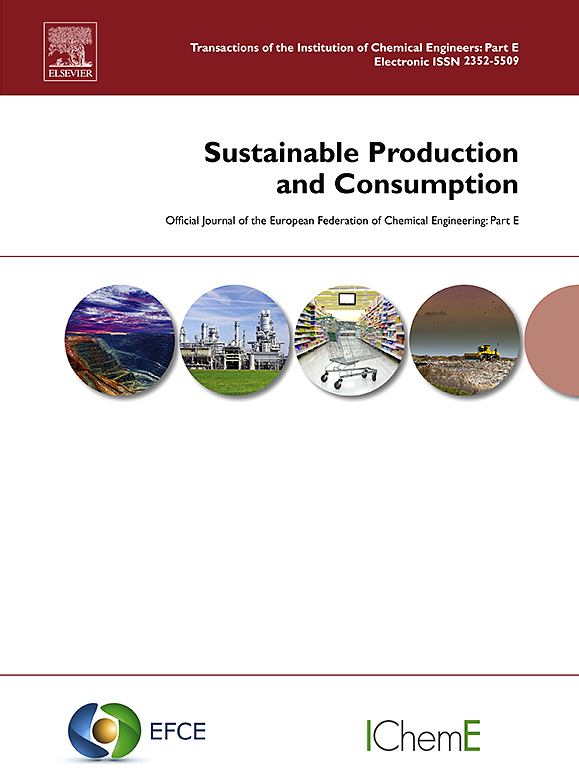A framework for assessing and enhancing product circularity by translating circular design criteria into measurable requirements
IF 9.6
1区 环境科学与生态学
Q1 ENVIRONMENTAL STUDIES
引用次数: 0
Abstract
The transition towards a circular economy (CE) is increasingly influencing engineering practices and product development. However, the concept of circular product design remains difficult to grasp, with existing circular design criteria lacking specificity and measurability. This paper proposes a comprehensive framework to translate these vague criteria into measurable requirements for product development to assess and improve a product's suitability for a CE. The presented methodology involves a three-step approach: collecting and analyzing standards-derived requirements, assessing a product's suitability for various R-Strategies based on the requirements, and identifying improvement opportunities via action portfolios. An industrial use case involving a centrifuge for liquid separation and discussion of results within an industry consortium through a SWOT analysis validated the applicability of the framework. Within this research, a structured list of measurable requirements for a circular product design was derived from circular design criteria from standards in the field of CE. Based on this list of requirements, an assessment of a product's suitability for the four circular strategies reuse, repair, remanufacture and recycle was examined with repair showing the highest suitability. An action portfolio was developed from the assessment results, outlining possibilities for action to improve product design at identified weak spots. However, the practical implementation of these improvements and reassessment of the product are beyond the scope of this study. The developed framework has been reported to be comprehensive and easy-to-implement. The integration of a scale-based assessment approach achieved measurability of the requirements and ease of application. The transparent assessment process allowed product developers to trace the impact of individual requirement changes and to adjust the overall assessment by weighting requirements against each other. Although some subjectivity remained due to the scale-based assessment approach, documented guiding questions helped ensure consistency across various iterations of assessment. While further quantification could enhance precision, this research contributes to advancing the transition to a CE in industrial practice by better aligning product design with CE standards and principles.
通过将循环设计标准转化为可测量的需求来评估和增强产品循环性的框架
向循环经济(CE)的过渡对工程实践和产品开发的影响越来越大。然而,循环产品设计的概念仍然难以把握,现有的循环设计标准缺乏专一性和可测量性。本文提出了一个全面的框架,将这些模糊的标准转化为产品开发的可测量需求,以评估和改进产品对CE的适用性。所提出的方法包括三个步骤:收集和分析源自标准的需求,基于需求评估产品对各种r策略的适用性,以及通过行动组合识别改进机会。一个涉及液体分离离心机的工业用例,以及通过SWOT分析在行业联盟中讨论结果,验证了该框架的适用性。在这项研究中,循环产品设计的可测量要求的结构化列表是从CE领域的标准中得出的循环设计标准。基于这一要求清单,评估了产品对再利用、修复、再制造和再循环四种循环策略的适用性,其中修复显示出最高的适用性。根据评估结果制定了行动组合,概述了在确定的薄弱环节改进产品设计的行动可能性。然而,这些改进的实际实施和产品的重新评估超出了本研究的范围。据报道,开发的框架是全面和易于实施的。基于规模的评估方法的集成实现了需求的可度量性和应用的便利性。透明的评估过程允许产品开发人员跟踪单个需求变更的影响,并通过对需求进行加权来调整总体评估。虽然由于基于比额表的评估方法,仍然存在一些主观性,但记录的指导性问题有助于确保各种评估迭代之间的一致性。虽然进一步的量化可以提高精度,但本研究有助于通过更好地将产品设计与CE标准和原则结合起来,在工业实践中推进向CE的过渡。
本文章由计算机程序翻译,如有差异,请以英文原文为准。
求助全文
约1分钟内获得全文
求助全文
来源期刊

Sustainable Production and Consumption
Environmental Science-Environmental Engineering
CiteScore
17.40
自引率
7.40%
发文量
389
审稿时长
13 days
期刊介绍:
Sustainable production and consumption refers to the production and utilization of goods and services in a way that benefits society, is economically viable, and has minimal environmental impact throughout its entire lifespan. Our journal is dedicated to publishing top-notch interdisciplinary research and practical studies in this emerging field. We take a distinctive approach by examining the interplay between technology, consumption patterns, and policy to identify sustainable solutions for both production and consumption systems.
 求助内容:
求助内容: 应助结果提醒方式:
应助结果提醒方式:


